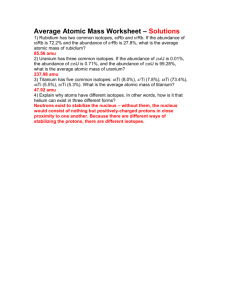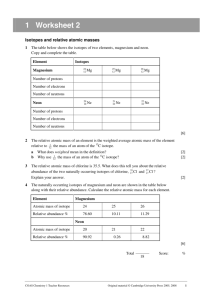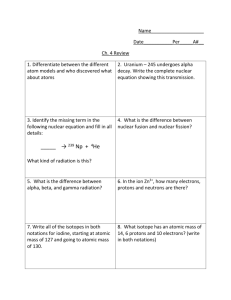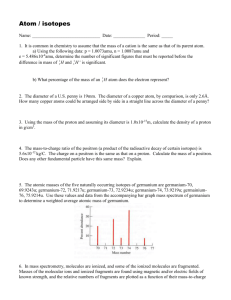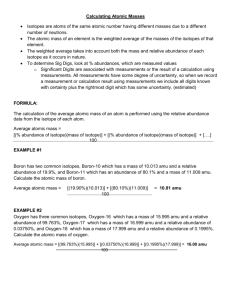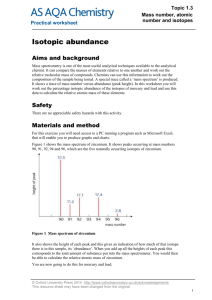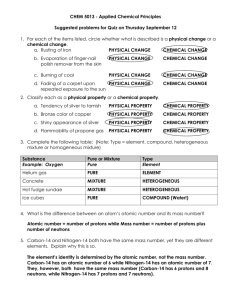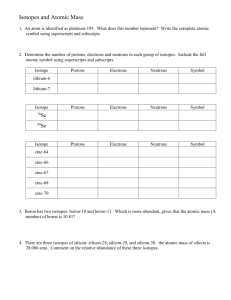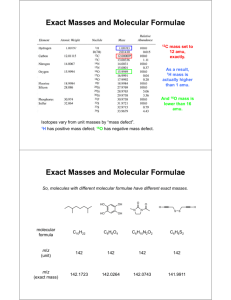Calculating Atomic Mass.
advertisement
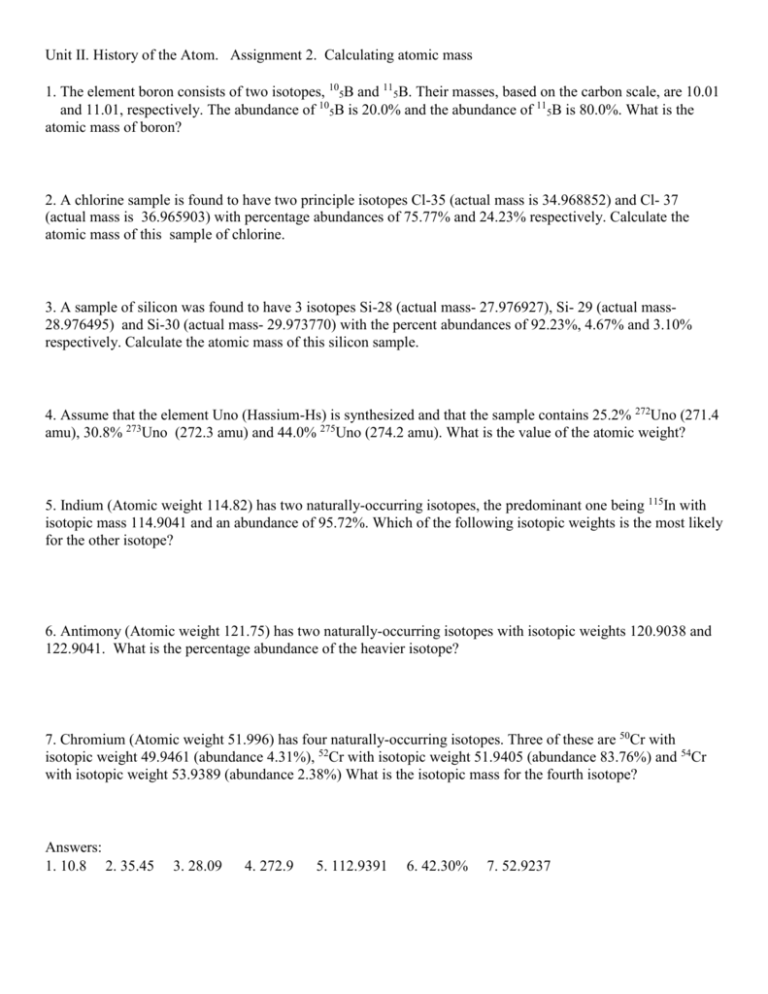
Unit II. History of the Atom. Assignment 2. Calculating atomic mass 1. The element boron consists of two isotopes, 105B and 115B. Their masses, based on the carbon scale, are 10.01 and 11.01, respectively. The abundance of 105B is 20.0% and the abundance of 115B is 80.0%. What is the atomic mass of boron? 2. A chlorine sample is found to have two principle isotopes Cl-35 (actual mass is 34.968852) and Cl- 37 (actual mass is 36.965903) with percentage abundances of 75.77% and 24.23% respectively. Calculate the atomic mass of this sample of chlorine. 3. A sample of silicon was found to have 3 isotopes Si-28 (actual mass- 27.976927), Si- 29 (actual mass28.976495) and Si-30 (actual mass- 29.973770) with the percent abundances of 92.23%, 4.67% and 3.10% respectively. Calculate the atomic mass of this silicon sample. 4. Assume that the element Uno (Hassium-Hs) is synthesized and that the sample contains 25.2% 272Uno (271.4 amu), 30.8% 273Uno (272.3 amu) and 44.0% 275Uno (274.2 amu). What is the value of the atomic weight? 5. Indium (Atomic weight 114.82) has two naturally-occurring isotopes, the predominant one being 115In with isotopic mass 114.9041 and an abundance of 95.72%. Which of the following isotopic weights is the most likely for the other isotope? 6. Antimony (Atomic weight 121.75) has two naturally-occurring isotopes with isotopic weights 120.9038 and 122.9041. What is the percentage abundance of the heavier isotope? 7. Chromium (Atomic weight 51.996) has four naturally-occurring isotopes. Three of these are 50Cr with isotopic weight 49.9461 (abundance 4.31%), 52Cr with isotopic weight 51.9405 (abundance 83.76%) and 54Cr with isotopic weight 53.9389 (abundance 2.38%) What is the isotopic mass for the fourth isotope? Answers: 1. 10.8 2. 35.45 3. 28.09 4. 272.9 5. 112.9391 6. 42.30% 7. 52.9237
